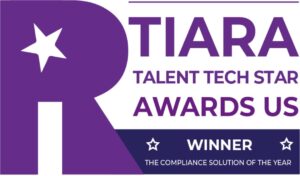Compliance has never been more critical for business owners. As regulations continue to change and tighten, compliance is becoming more challenging. This environment makes having an effective compliance training program more important than ever.
These programs ensure you and your employees know what to do to avoid compliance violations that can cost your business in fines and penalties. Discover what you need to do to ensure your compliance programs are helping you meet that goal.
Developing an Effective Compliance Training Program
Creating a compliance training program is no easy feat. Businesses are busy places, and compliance training can often get lost in the sea of day-to-day projects and tasks. New employees can easily become overwhelmed with onboarding requirements, sometimes sweeping compliance to the wayside in favor of what seem to be more urgent tasks.
Still, businesses cannot downplay the importance of an effective compliance program. Employees must be trained on how to avoid costly mistakes that can put the organization in jeopardy. Discover the keys to creating a program that works to reduce compliance risk and keeps the company out of harm’s way.
Use Personalization and Creativity
Using a “one size fits all” training program is the quickest way to get employees to tune you out during the presentation. Instead, all training should be specifically relevant to the employee’s role in the company. This way, you can incorporate real-world scenarios and examples that the employee might encounter on a normal workday.
If you’re using an online system for training delivery, this likely means you will have to work with your IT personnel to improve the data quality of user profiles in your learning management system. This gives you an opportunity to develop and assign online training based on attributes and roles.
If you’re doing live training, you may need to schedule training so that groups of employees who work in the same roles can be in the room at the same time.
Break It Down for Everyone
You want to ensure that everyone can comprehend and learn from your presentation, including new employees who may not yet understand technical language. Avoid stuffing your presentation with jargon. Also, ensure that it follows a logical sequence.
As you design your training program, try to appeal to different learning styles to ensure that everyone retains the information.
Avoid the “One and Done” Approach
Because compliance is ongoing, compliance training should be as well. Consequently, you should opt for periodic training rather than trying to stuff all you know about compliance into a day-long session.
Presenting the information in shorter bursts not only keeps your audience interested but also keeps the topic of compliance fresh in the minds of employees.
Get Senior Management Involved
Make sure your senior management team is on board with your compliance training program. Executives should communicate to employees about it often and enthusiastically. If you want employees to take compliance training seriously, they need to know that executives care about compliance. They also need to see active examples of leadership not tolerating misconduct.
Encourage Follow-Up Questions
After the training session, employees will likely have questions about how compliance rules affect their specific roles. Make sure to give people a direct way to ask questions that aren’t appropriate for the large auditorium setting. This could mean creating a web page, form, or email address to submit questions directly to the compliance team.
If your training is online, include a slide at the end with this information. Additionally, train supervisors and managers on how to respond to frequently asked questions in case employees feel more comfortable approaching them instead.
Measuring Program Effectiveness
The whole point of having a compliance program is to ensure that every employee practices legal compliance in their everyday work. Still, it can be challenging to know whether your training program is working to that end. Here are a few tips to help you accomplish that goal.
Measuring Employee Knowledge
Just having employees read and acknowledge policies tells you very little about how much they’ve learned about compliance. Instead, try using online survey tools or software to test employees’ compliance knowledge.
You can allow them to take the test right after training and then retest their knowledge at regular intervals throughout the year to help with information recall. Then, collect data from each test to identify any knowledge gaps. You can use that data to address those gaps in future training.
Evaluating Tangible Outcomes
The best way to evaluate whether your training is truly effective is to collect data through your auditing and monitoring program. This will help you assess whether audit results are getting progressively better. You can also use online surveys to capture changes in employee attitudes around compliance.
Compliance Training Is Worth the Time and Effort
In today’s business world, there is little room for mistakes when it comes to compliance. To avoid costly penalties, you need to make sure that everyone is on board, including the employees who drive so much of the work you do.
While developing an effective compliance training program takes trial and error, the work you do will pay off in the end. If you can help employees across your organization avoid misconduct, it will go a long way toward ensuring your organization stays in good standing so you can keep doing good work.






